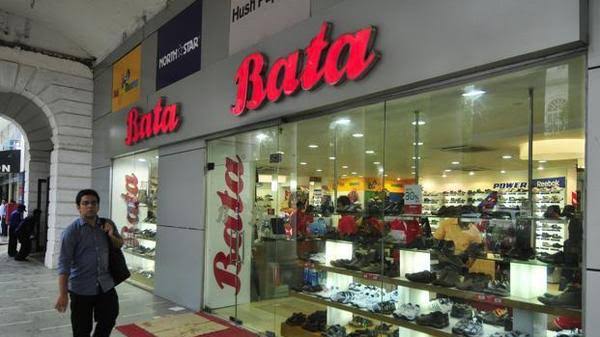Add your promotional text...
Is It Time for Bata India to Experience a Metro Brands-like Re-rating?
Synopsis: India's footwear market is evolving, with a shift towards premium products and branded footwear. While per capita footwear consumption in India remains low compared to global standards, companies like Bata India and Metro Brands are navigating the changing landscape. Bata has embraced a premiumisation strategy, while Metro benefits from an asset-light model and strong branding. Despite Bata's traditional approach, its recent stock correction and focus on store expansion may signal a potential re-rating, though challenges remain. This blog explores how Bata can position itself closer to its more profitable peer, Metro Brands.
EDITORIAL
By Divyanshu Pandey
9/11/20243 min read


Footwear consumption patterns vary significantly across different regions. In the United States, the average individual owns approximately eight pairs of shoes. Europeans and Japanese individuals own around six pairs each, while the average person in neighboring Asian countries possesses about three pairs. Globally, the average stands at three pairs per person. In contrast, research by CRISIL indicates that the average Indian owns just two pairs of footwear.
This disparity raises a pertinent question: Will Indians begin to purchase footwear at a significantly higher rate in the coming years? Will the anticipated rise in per capita income be mirrored in footwear consumption?
At this point, betting on a dramatic increase in per capita footwear consumption in India may not be wise. Historical data suggests that footwear consumption per capita in India has remained relatively static over the years.
Given this context, what are the prospects for Indian footwear manufacturers experiencing substantial growth in the near future? How can these companies leverage India’s consumption trends, and will stocks in the footwear industry continue to attract investors?
While per capita consumption may not be soaring, there is a notable shift in consumer preferences towards higher quality and more branded footwear. This trend is not always reflected in volume metrics but is indicative of a changing market landscape.
Leading players like Bata and Relaxo Footwears have faced their share of challenges despite their established presence in the Indian market. Bata, for instance, outsources approximately 50% of its production capacity, while Relaxo relies almost entirely on in-house manufacturing. Both companies experienced production disruptions during the pandemic.
Over time, Indian consumers’ shopping preferences have shifted from being price-sensitive to fashion-conscious. Bata has traditionally positioned itself as a durable, low-fashion brand. Its growth strategy has been characterized by consistency rather than innovation. However, since 2010, Bata has embraced a strategy of ‘premiumisation’ to maintain competitiveness and profitability. The company has revamped its product line to include trendier and more fashionable options, and exited the low-value segment (footwear priced under Rs 200).
Bata’s premium offerings now include brands such as Hush Puppies, Naturalizer, and North Star, alongside casual, daily wear, sports, and outdoor categories for teenagers. This shift towards the premium segment has resulted in a compounded annual growth rate of 4-5% in per pair realization over the past five years. Additionally, volume growth has seen double-digit increases post-pandemic. This focus on premium products has led to higher gross margins, boosting overall return ratios from 14% in fiscal year 2018 to 23% in fiscal year 2024.
In contrast, Metro Brands, a relatively newer competitor in the footwear retail sector, has been focusing on branding and licensing. With over 70% of its revenue derived from private brands, Metro Brands aims to strengthen its brand portfolio. Its flagship Metro brand caters to families, while Mochi targets millennials. Metro also holds exclusive licenses for global brands such as Crocs and FitFlop, which are featured in dedicated brand stores. Recent product launches like Metro Nature Pro and Mochi Australian Wool emphasize sustainability, with products made from recycled PET bottles and wool, respectively.
Metro Brands benefits from a fully outsourced production model, allowing it to tailor its offerings regionally. For instance, products sold in different regions of India vary in size, style, and color to suit local preferences. The company’s strategy of owning its stores, rather than franchising, supports its ability to customize products effectively.
Metro’s profitability and economies of scale differentiate it from its competitors. The company’s extensive supplier network enables it to secure better margins and favorable terms with third-party brands. Additionally, Metro operates on a variable cost structure for leases and employee expenses, which helps stabilize store-level margins. The company has also embraced e-commerce and digital platforms, further enhancing its market presence.
On the other hand, Bata India relies on a more traditional expansion approach, operating an extensive network of 1,862 company-owned and franchise stores. Bata has made significant strides in digital transformation with innovations like digital invoicing and an online inventory app, alongside enhancing the in-store experience with technological advancements. During fiscal year 2024, Bata expanded its footprint by opening over 500 franchise stores, 650 Sneaker Studios, and 125 Hush Puppies outlets. It has also formed new partnerships across various marketplaces and digital platforms.
Bata’s aggressive reinvestment in its store network aims to enhance accessibility and customer experience. However, compared to Metro Brands, Bata trails in operating margins and debt levels. The stark contrast in valuations between the two companies suggests that Bata might be poised for a valuation re-rating over time.
Since October 2021, Bata’s stock has undergone a significant correction. There is potential for its price-to-earnings (P/E) ratio to rebound towards its three-year average of 68x, up from its current multiple of 52x. Conversely, Metro Brands’ current P/E ratio of 83x exceeds its three-year average of 87x.
Until Bata India enhances its digital footprint and reduces its debt, investors may remain cautious about its potential to match or exceed the valuation metrics of its top-performing peer, Metro Brands.
